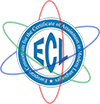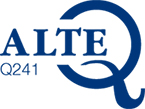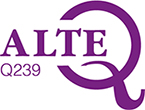WRITTEN EXAM
- Reading Comprehension
Completing two different reading comprehension tasks correctly, the candidate must demonstrate the ability to understand the content of a general text at the appropriate level without using a dictionary.
- Written Communication
The candidate must write two compositions (consisting of the required number of words) on the basis of several bullet points. Printed dictionary may be used.
The criteria for assessing written communication are as follows:
| Formal accuracy (morphology and syntax) |
| Accuracy (test construction and spelling) |
| Vocabulary (range and activation) |
| Style (pragmatic and sociolinguistic aspects) |
| Communicative effectiveness (adequate task completion) |
ORAL EXAM
- Listening Comprehension
Completing two listening comprehension tasks correctly after listening to two different recordings twice, the candidate must demonstrate the ability to understand the content of general spoken language at the appropriate level.
- Oral Communication
The ECL language exam is a paired exam. Candidates take the exam in pairs (or in the case of odd number of candidates, in threes).
Structure of the Oral Exam
- Warm-up
- The purpose of this part to put the candidates at ease and to warm them up for the exam. This part is not assessed.
- Guided Conversation
- The interviewer initiates a conversation connected to the topic assigned and assists candidates in having a dialogue by asking them questions.
- Individual talk
- There is a picture montage available for each topic consisting of four pictures.
- The two candidates share their views individually, one after another, on the topic represented in the montage.
- If needed the interviewer may assist candidates with questions appropriate for the exam’s level.
- The purpose of this part is to give the candidates a chance to expand their views on the pictures and topics in well-structured, logical monologues.
The interviewer and the assessor evaluate the performance of the candidates individually. The criteria for assessment are as follows:
| Formal accuracy (morphology, syntax) |
| Oral accuracy (pronunciation, prosody, fluency) |
| Vocabulary (range, activation) |
| Style (pragmatic and sociolinguistic accuracy) |
| Communicative effectiveness (completing the task according to the selected topic) |






